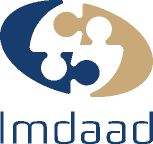Until very recently, hygiene cleaning was considered a necessity by only a few industries such as healthcare, F&B and hospitality. Many other industries and businesses saw the importance and included it on a periodic basis in their PPM schedules. However, for the most part hygiene cleaning was not too common, and the key driver for it was usually compliance with government and municipal guidelines or standard requirements such as HACCP.
Fast forward to 2020 and the COVID-19 pandemic, a new reality is dawning upon everyone. Hygiene cleaning is now a first order of business, and it is likely to continue that way in a post-COVID-19 world. The safety of employees and clients when they are on the premises is a primary concern and responsibility for the business.
What is Hygiene Cleaning? How is it different than standard cleaning?
Standard cleaning can only go as far as removing visible debris, dirt, and dust. It might reduce allergens, but it will do very little to reduce the occurrence and growth of pathogens such as bacteria, viruses and fungi. Standard cleaning also runs the risk of cross-contamination in the absence of germicides; or put simply: the risk of spreading the germs.
Going up a notch is deep cleaning and sanitization which go further in reducing pathogens but still do not necessarily kill all viruses such as the novel Coronavirus responsible for COVID-19.
To kill all microscopic organisms off the surfaces and the air a business would need hygiene cleaning and dedicated disinfection activities.
The difference between all these types of cleaning is reflected through differences in process, techniques, materials used, and labour required.
New Standards and Measures for Hygiene Cleaning
Since the early days of the COVID-19 pandemic, Imdaad Group has been on the frontlines looking for innovative ways to prevent the outbreak. As such we have made numerous changes to our hygiene cleaning and disinfection line of services to provide our clients with guaranteed results.
- We perform deep cleaning as a necessary step prior to carrying out hygiene cleaning and disinfection. By this we remove stubborn dirt which could attract microorganisms, and we remove old residues of cleaning agents which could interact with the biocides and disrupt the success of disinfection.
- We have pioneered a new step in the process following the disinfection service which involves nano-coating to protect surfaces especially high contact points with a long lasting antibacterial and antiviral effect to slow down the buildup of colonies on the surfaces. The nano-coating treatment basically adds a monomolecular layer of an antimicrobial agent that is permanently bonded to the surface. The coating is eco-friendly, non-toxic, water based, and lasts for 30 days. It also helps to reduce the frequency of sanitation activities.
- To maintain indoor air quality and hygiene we install air purifiers equipped with a precise laser sensor, automatic mode, and multiple filter types for different areas of application.
- A good hygiene cleaning strategy should include safety measures to maintain the hygiene on an ongoing basis. Examples includes disinfecting people or goods entering the premises using disinfection tunnels (such as ViroShield by Imdaad Group) and enhancing preventive maintenance schedules by adding periodic disinfection activities.
- Finally, in businesses and facilities that include large public spaces where there’s a constant flow of people, we recognized the need for a scalable solution to scan temperatures, detect face masks, and carry out continuous disinfection. We introduced AIMBOT, the indoor smart anti-pandemic patrol robot. It will patrol the area, detect people and measure their temperatures and check if anyone is not wearing a face mask, in addition to performing automatic disinfection. The AIMBOT robot is able to scan up to 200 people per minute.

